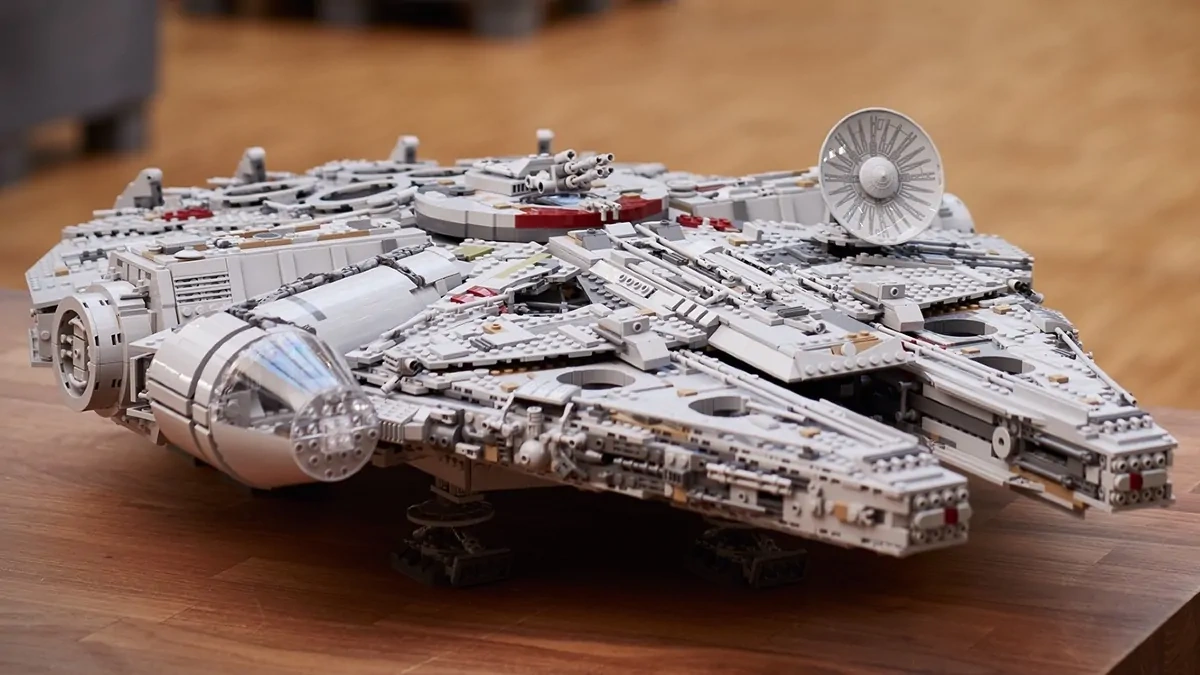Let’s be honest, in a world dominated by screens and fleeting trends, it’s easy to dismiss LEGO as just another toy. But, here’s the thing: LEGO is so much more than colorful plastic bricks. It’s a portal to creativity, a tool for learning, and a timeless tradition that connects generations. What fascinates me is how it adapts and stays relevant in a constantly changing world. Why are these little bricks still so popular?
The “Why” Behind the Enduring Appeal of LEGO

I initially thought the LEGO phenomenon was pure nostalgia – a yearning for simpler times. And, that is part of it. However, after diving deeper, I realized it’s about something more profound: LEGO fosters creativity and problem-solving skills. Think about it. You start with a pile of random bricks and transform them into anything your imagination conjures up – a spaceship, a castle, a robot. It’s hands-on, engaging, and incredibly satisfying. The official LEGO website shows countless examples of adults sharing their incredible builds.
But the magic of LEGO sets extends beyond individual play. They’re a fantastic tool for collaborative learning. Kids (and adults!) can work together to build complex structures, learning to communicate, compromise, and problem-solve as a team. And, let’s not forget the educational benefits. LEGO kits often incorporate STEM (Science, Technology, Engineering, and Mathematics) principles, subtly introducing children to important concepts in a fun and engaging way.
LEGO’s Evolution | More Than Just Bricks
LEGO has successfully evolved beyond simple building bricks. They’ve embraced digital technology, creating video games, movies, and interactive experiences that appeal to a broader audience. This isn’t just about jumping on the bandwagon; it’s about extending the LEGO universe and providing new ways for people to engage with the brand. The LEGO Group has even ventured into the world of sustainable practices by exploring more eco-friendly plastics for their brick production.
This adaptability is crucial. Instead of resisting change, LEGO has embraced it, finding innovative ways to stay relevant and appeal to new generations. They collaborate with popular franchises like Star Wars and Marvel, creating sets that tap into existing fan bases and introduce new audiences to the world of LEGO bricks . These collaborations ensure that LEGO remains a cultural force, not just a toy brand.
LEGO for Adults | It’s Not Just for Kids
Here’s the thing – LEGO isn’t just for kids anymore. There’s a thriving community of adult LEGO enthusiasts (AFOLs) who build intricate models, participate in competitions, and share their creations online. These aren’t just simple structures; they’re works of art, engineering marvels, and expressions of creativity. What I think is interesting is that LEGO has recognized this trend and actively caters to the adult market, creating complex and challenging sets that appeal to experienced builders.
These sets often feature thousands of pieces, intricate details, and advanced building techniques. They offer a challenging and rewarding experience for adults looking to unwind, de-stress, and tap into their creative side. The LEGO Architecture series, for example, allows adults to recreate famous landmarks from around the world, providing a unique and educational building experience. It’s about more than just play; it’s a form of artistic expression and a way to connect with history and culture.
Investing in LEGO | More Than Just a Hobby?
Okay, so here’s something that might surprise you: some LEGO sets actually appreciate in value over time. Certain limited-edition sets, particularly those based on popular franchises or with unique designs, can become highly sought-after collectibles. This has led to a secondary market where rare LEGO sets are bought and sold for significant sums.
Now, I’m not suggesting you should quit your day job and start investing in LEGO full-time, but it’s an interesting phenomenon that highlights the enduring appeal and collectibility of the brand. It’s a testament to the quality, design, and cultural significance of LEGO sets. However, it is best to do your due diligence. As of 2023, the LEGO Group had a brand value of approximately 7.4 billion U.S. dollars. It’s important to be aware of the risks involved. Not all LEGO sets become valuable, and the market can be unpredictable.
LEGO | A Timeless Toy That Continues to Inspire
So, why does LEGO still matter? Because it’s more than just a toy. It’s a tool for creativity, a platform for learning, and a timeless tradition that connects generations. It adapts to change, embraces technology, and continues to inspire people of all ages. It’s a reminder that play is important, creativity is essential, and sometimes, the simplest things can be the most powerful. Let me rephrase that for clarity – that is LEGO’s magic.
Frequently Asked Questions About LEGO
What is the most expensive LEGO set ever sold?
The most expensive LEGO set ever sold is the Millennium Falcon, which can fetch thousands of dollars depending on its condition and rarity.
Are LEGO bricks recyclable?
LEGO bricks themselves are not typically recyclable through standard municipal recycling programs, but LEGO has a program where you can donate used bricks.
What is the best age to start playing with LEGO?
LEGO offers different sets for different age groups, with LEGO DUPLO being ideal for toddlers (1.5+ years) and classic LEGO bricks suitable for ages 4 and up.
Can I buy individual LEGO bricks?
Yes, you can buy individual LEGO bricks through the LEGO website’s “Bricks & Pieces” section or through third-party marketplaces like BrickLink.
What if a LEGO set is missing a piece?
LEGO offers a service where you can request missing pieces for free on their website.
How many LEGO bricks are produced each year?
LEGO produces billions of bricks each year. In 2022, around 91.5 billion LEGO elements were sold worldwide.




